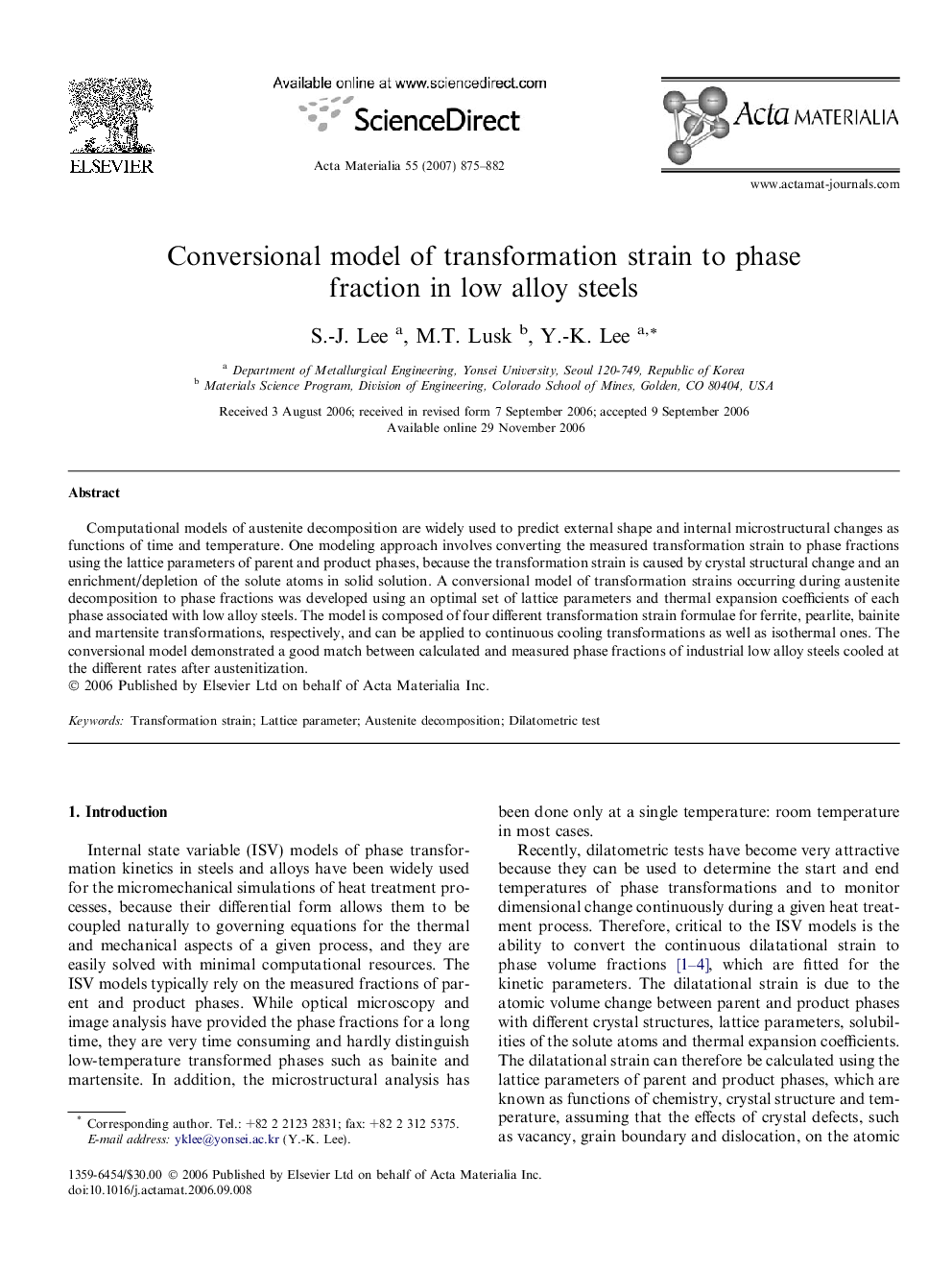| Article ID | Journal | Published Year | Pages | File Type |
|---|---|---|---|---|
| 10620873 | Acta Materialia | 2007 | 8 Pages |
Abstract
Computational models of austenite decomposition are widely used to predict external shape and internal microstructural changes as functions of time and temperature. One modeling approach involves converting the measured transformation strain to phase fractions using the lattice parameters of parent and product phases, because the transformation strain is caused by crystal structural change and an enrichment/depletion of the solute atoms in solid solution. A conversional model of transformation strains occurring during austenite decomposition to phase fractions was developed using an optimal set of lattice parameters and thermal expansion coefficients of each phase associated with low alloy steels. The model is composed of four different transformation strain formulae for ferrite, pearlite, bainite and martensite transformations, respectively, and can be applied to continuous cooling transformations as well as isothermal ones. The conversional model demonstrated a good match between calculated and measured phase fractions of industrial low alloy steels cooled at the different rates after austenitization.
Related Topics
Physical Sciences and Engineering
Materials Science
Ceramics and Composites
Authors
S.-J. Lee, M.T. Lusk, Y.-K. Lee,
